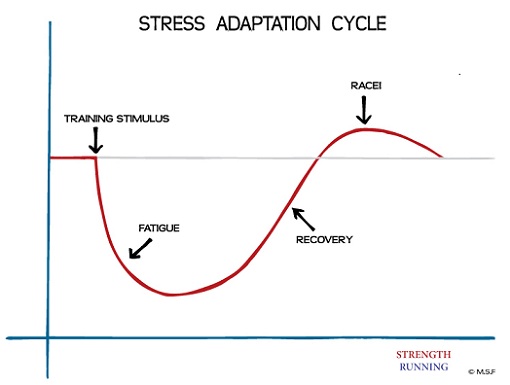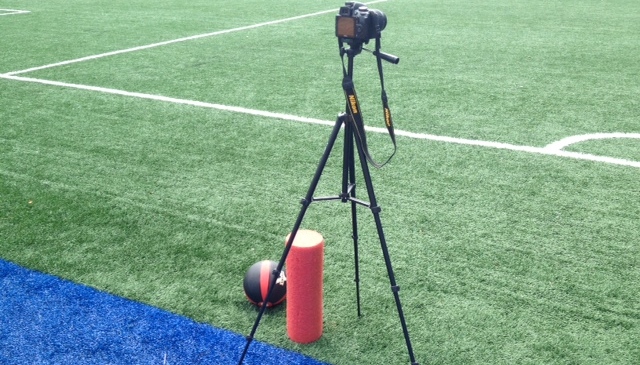Flash back ten years ago: I was tearing through 80 mile weeks as a cocky 19 year old. But disaster was right around the corner.
I really had no idea what I was doing. My college coach gave us flexibility with our mileage and I was running too much, too soon, too fast. The “little things” that help you stay healthy were an afterthought.
Having a coach is an amazing opportunity but in college they’re responsible for 20+ runners during a 2-hour practice. You often don’t get the personal attention that you get with a private, 1-on-1 coach.
So I ran myself into the ground. I reached 90 miles per week and then was forced to recover (slowly) from IT band syndrome.
This was after chronic Achilles tendinopathy ruined my spring track season. Later that year I’d have a string of other injuries.
I was locked in the injury cycle and had no idea what to do. It was frustrating; I thought I was doing everything right…
Fast forward to today: I ran over 350 miles in July and haven’t had a serious injury in over four years. Injury-free training has created a consistency I could only have dreamed of while I was in the “dark ages” of my running career. My marathon time improved to 2:39 and I’ve since won a marathon and Warrior Dash.
I tell you this so you know that I was fragile and prone to overuse injuries. I used to be just like many of you but I’ve learned how to “crack the code” of my own personal injury cycle.
Since then, I’ve been working with runners to help them do the same. In the last week, an enormous number of you have expressed interest in injury prevention. I’m so excited because it’s possibly the most powerful way to become a better runner.
Imagine what you could accomplish if you could stay healthy? The results can be incredible – just look at Sarah’s improvement.
The lessons I’ve learned over the years could fill a book (and I’m seriously considering writing one), but today I want to share the common injury blunders that keep runners locked in their own injury cycle.
Your Body is Not a Machine
You’re not Darth Vader (more machine than man!). The adaptation process takes longer than you think – months in most cases. And if you don’t respect that process you’ll break down and get hurt.
Whenever you do a hard workout, you actually reduce your fitness level and create a lot of damaged muscles. That’s why your fitness is decreased in this visual guide to the Stress Adaptation Cycle:

When most runners train for a race, they increase their mileage or run faster and longer workouts every week. The thinking goes, “If I ran this much last week, I can increase it this week right?”
Nope!
There needs to be recovery time built in to every training plan. This week I was interviewed by a columnist for Greatist and explained the numerous ways that recovery can be “automatically” built into a program.
Instead of always pushing forward with more miles, faster workouts, and longer speed sessions it’s best to take a long-term outlook on your training. Short-term thinking almost always results in trying to “catch up” and do more than your body is ready to handle.
Muscles, bones, tendons, and ligaments are tissues that break down with use. Don’t treat your legs like components of a machine.
Patience is a Virtue
A natural extension of running too much, too soon is having a complete lack of patience.
I love that I’m able to talk with runners all the time. But sometimes I cringe:
I haven’t run in a year – can I get ready for a half marathon in 10 weeks?
My diagnosis was a stress fracture but I’d really like to run my local 10k this weekend. Can I do it?
My weekly mileage is 7 and my goal race is the New York City Marathon in 8 weeks.
I could be your cheerleader and tell you that running is all cuddles, kittens, and rainbows.
But it’s not. Running is hard. It’s a contact sport between you and the ground and it can cause some serious damage.
My job is to help you become a better runner – healthier, faster, stronger, and free of injuries. Sometimes that means being brutally honest. And many of you are wildly impatient.
Good runners think long-term and put in the work month after month. They don’t care that they’re not ready to race this weekend – they’re more interested in building the fitness they need six months from now.
It’s a different mindset, but it’s often the difference between those who are chronically injured and consistently healthy.
No Strength Exercises (still?!)
One of the things that Strength Running is known for are the strength routines that help runners stay healthy. The Standard Warm-up and ITB Rehab Routine are two of the most popular, getting a combined view count of over 100,000 (!) on YouTube.
I’ve written about strength work and its value for injury prevention for years. And it amazes me when long-time readers admit that they never do their strength work.
Understandably, there are a lot of questions about what to do.
What are the specific exercises I should do for my specific injury?
How often should I do the exercises? How many reps of each one?
Can you show me a video of the routine? Is there a text version of the instructions?
I’m hard at work putting together detailed videos on new strength routines that will answer all these questions (stay tuned here). Last week I spent all morning filming and was sore for the entire weekend. The things I do for you…

Soon I’ll have progressions of exercises, injury-specific routines, and new rehabilitative steps for injuries.
Until then, stick to the Standard Warm-up before your run and the ITB Rehab Routine and Standard Core Routine after your runs.
It’s not sexy training but it’s damn effective.
Repetitive Training = Repetitive Stress
A better term for “running injury” is really “repetitive stress injury.” Let’s admit it: the sport that we love is pretty repetitive. It’s just running, all the time!
If you repeat the same movement a thousand – or tens of thousands – of times, your risk of an overuse injury skyrockets.
And some runners make it worse: they wear the same shoes, run the same pace every day, the same distance runs, and never vary their workout routine.
But by introducing more variety into our training we can cut this cycle and reduce that repetition. There are countless options:
- Run many different paces
- Wear 2-3 shoes in rotation
- Vary the elevation profile of your runs
- Run on different terrain
- Schedule many types of workouts
- Train for different goal races
- Cross-train
- Run on different surfaces
All of these factors impact the stresses your body experiences. And you can manipulate all of them.
Did your foot start hurting when running paved hill repeats in your Newtons yesterday? Then today wear a different shoe on trails and keep the terrain flat.
This subtly changes how impact is distributed through your legs, how you strike the ground, and how you move as you run. Often these little variations are all you need to keep a little niggle from developing into a serious injury.
When I write custom training programs, a hallmark of my plans are variety of paces (at least four), distances, and types of workouts.
Reduce the repetition and you’ll be able to reduce your injury rate. It’s worked for me and has helped thousands of runners just like you.
Run Faster to Run Faster…Right?
If you want to race faster, you have to train faster. Or so many people think.
Surprisingly, many runners are running too fast during training and aren’t recovering properly between workouts. Fatigue is then carried into a long run or faster workout, causing a mediocre performance.
The result? Every run during the week is a moderate effort. There are no very hard days and certainly no easy days.
When I started working with Sarah this was one of her mistakes. She thought she had to work harder (instead of smarter) and was surprised when I reduced her fast workouts and had her do fewer cross-training sessions.
What Sarah did – and you should too – is to make your hard days harder but your easy days easier. In fact, Matt Fitzgerald just tweeted about a study that showed runners improve their 10K time more with a 77%/3%/20% low/medium/high training intensity distribution than with a 46%/35%/19% breakdown.
What does that mean? Simply put, reduce the moderate days and make more of your runs easy!
Injury Misconceptions + Q&A
Recently I collected hundreds of responses in a survey about injury prevention. I wanted to find out what you’re struggling with and how I can help you run healthier with fewer injuries.
That presentation is now available to those who are interested in learning more about running healthy. If you previously signed up, you already have access to the presentation.

If not, you can sign up here and I’ll email it to you.
Finally, I just want to say thank you to those who responded to this survey, have emailed me about their specific injury issues, and are interested in how to finally run healthy.
Seriously – the response has been huge and I can tell that this topic has really struck a nerve. If you know some runners that you think need some injury advice, forward them this article!
More to come…
